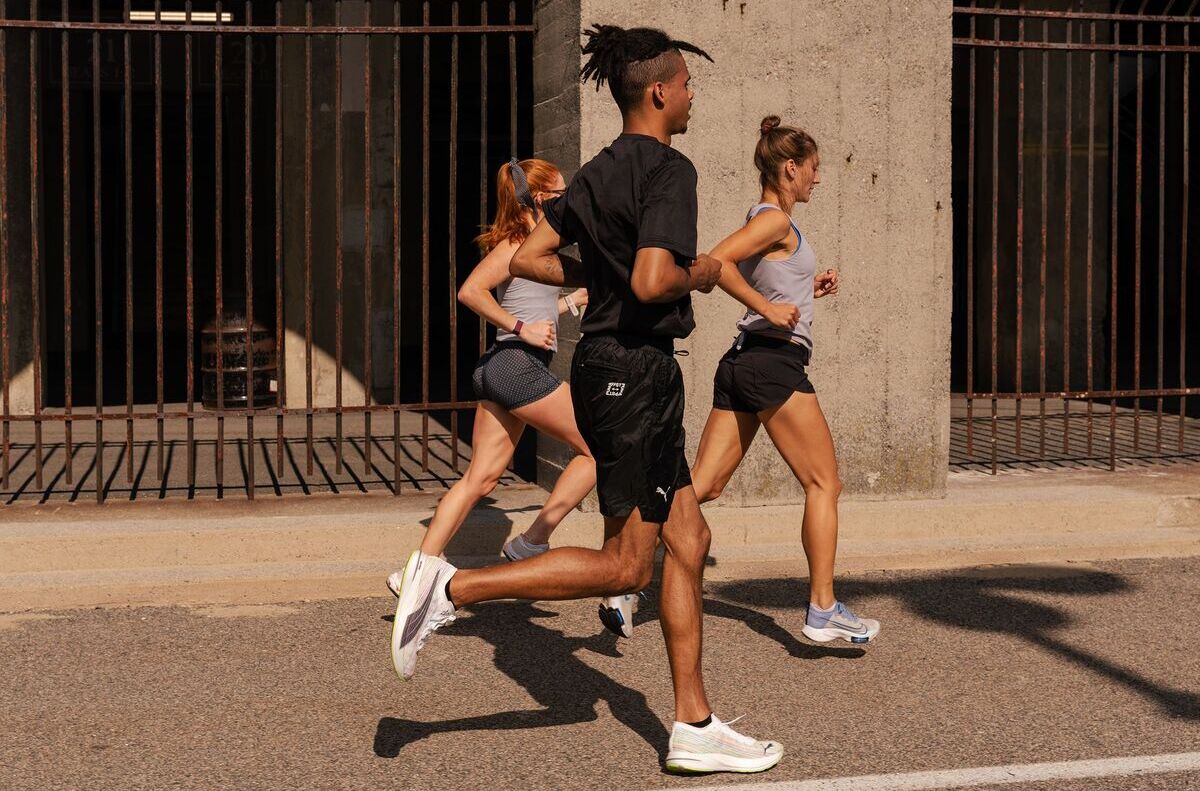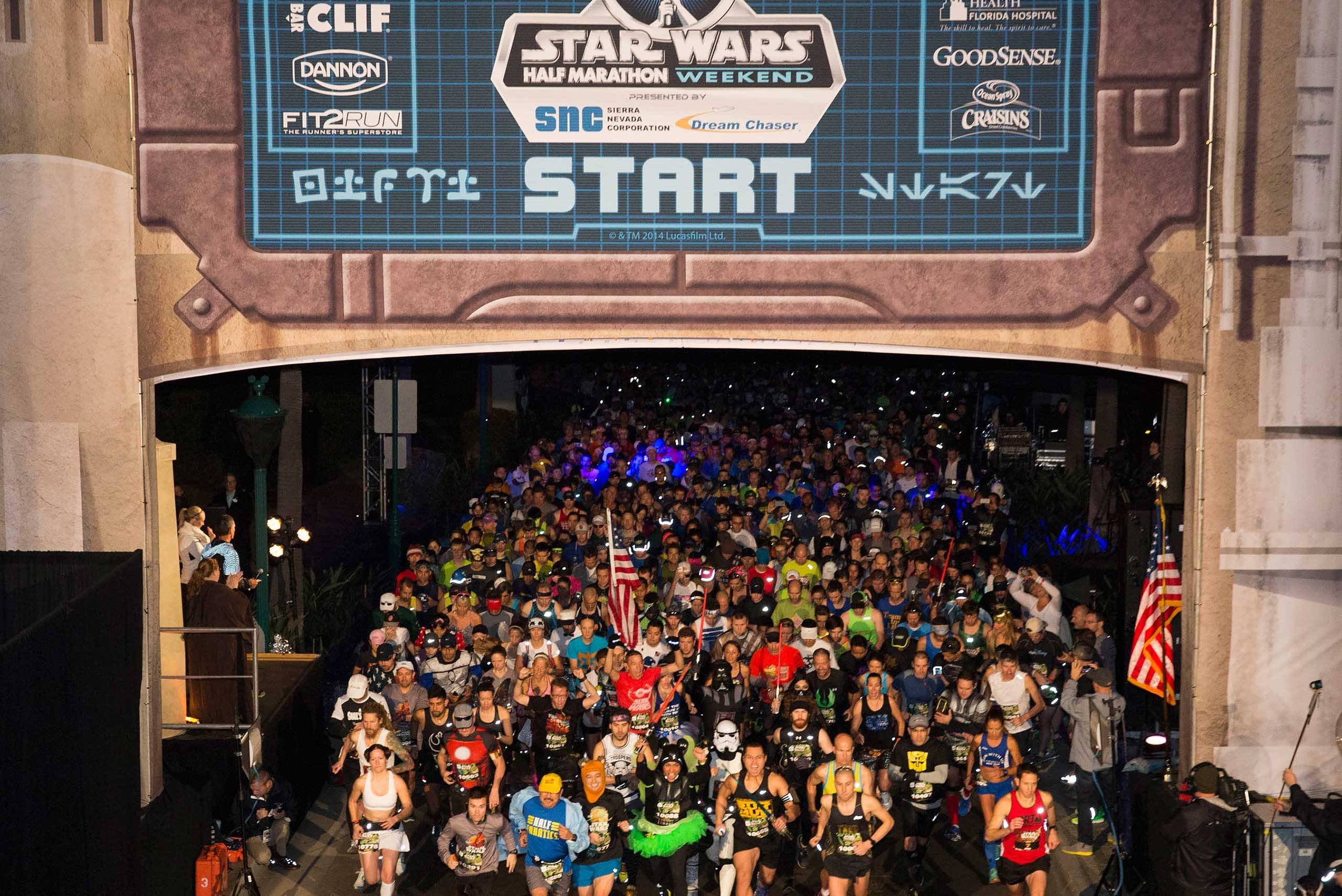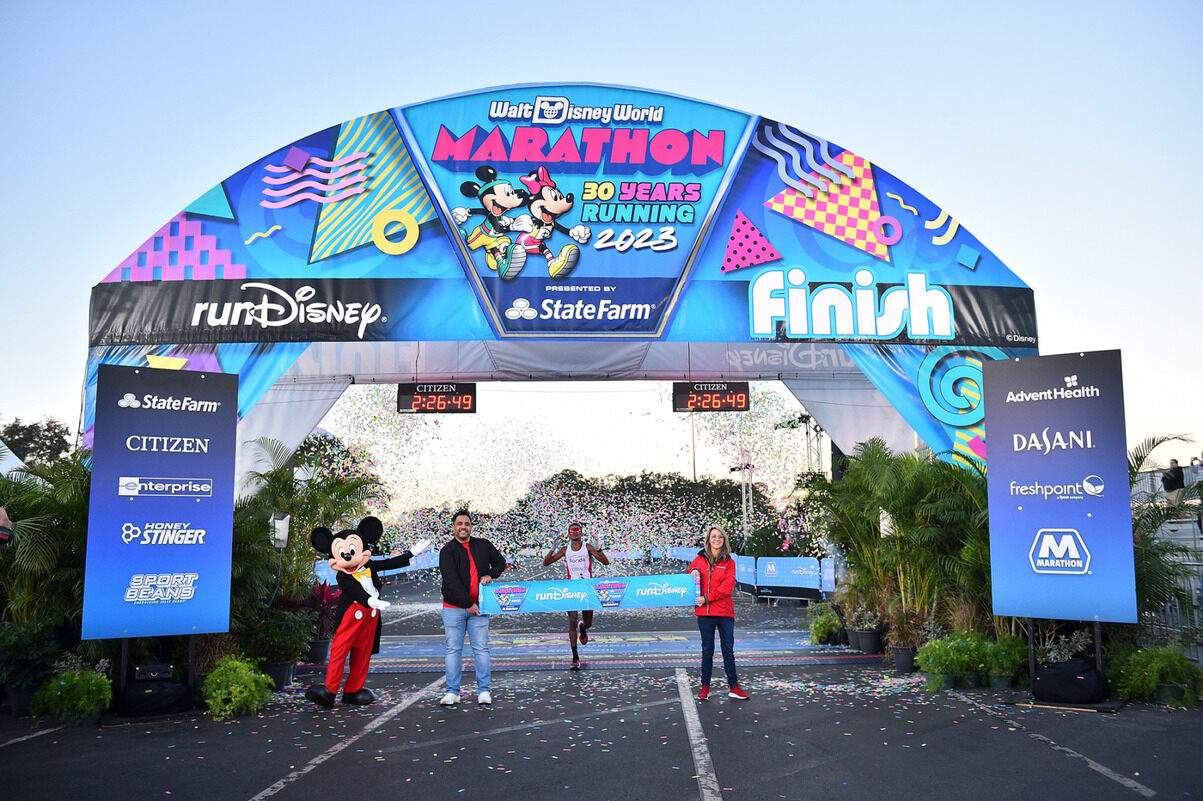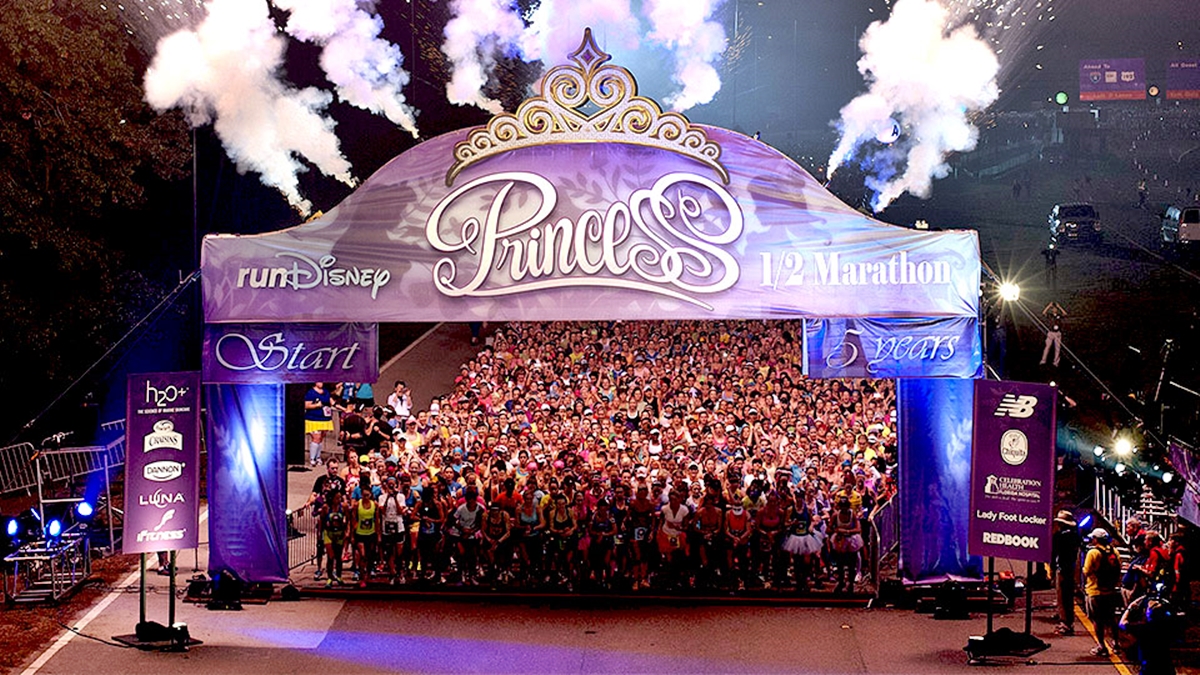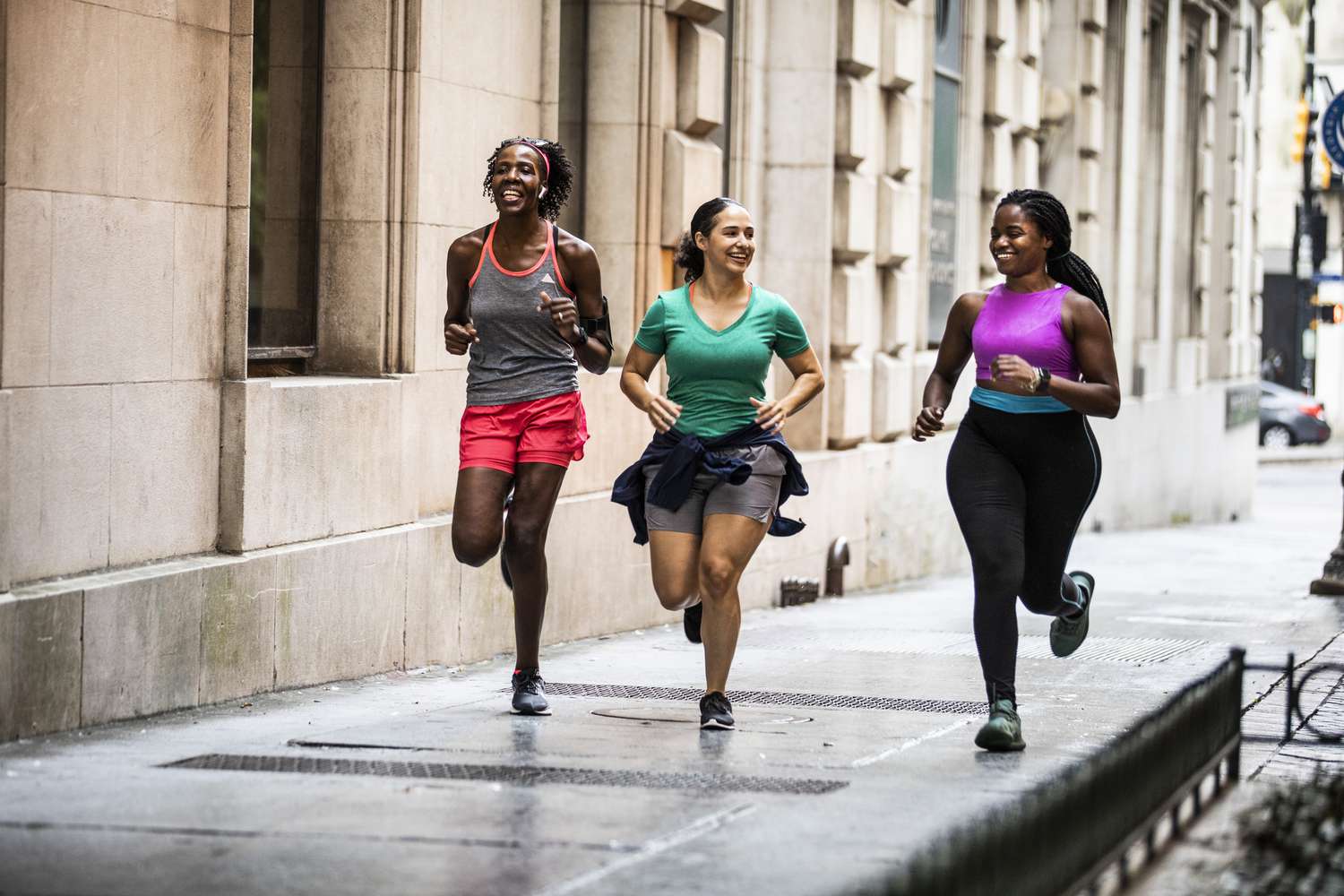

Featured
How Long Is A 5K And 10K Run
Modified: August 21, 2023
Learn about the distances of a 5K and 10K runs. Find out how long they are and get tips for training. Featured on our blog.
Introduction
Welcome to the exciting world of long-distance running! If you’ve ever wondered what it takes to complete a 5K or 10K run, you’ve come to the right place. Whether you’re a seasoned athlete looking for a new challenge or a beginner hoping to improve your fitness level, participating in these races can be a fulfilling and rewarding experience.
A 5K run is a popular distance for both beginner runners and experienced athletes. It offers a manageable challenge while providing an opportunity to gauge your running abilities and set future goals. On the other hand, a 10K run is a step up in distance, requiring more endurance and training.
In this article, we’ll delve into the details of both the 5K and 10K runs, including the distance, tips for preparing, and the benefits you can reap from completing these races. So, whether you’re considering signing up for your first 5K or aiming to conquer a 10K, let’s dive in and discover what it takes to conquer these distances.
Before we get into the nitty-gritty of the runs, it’s important to note that both the 5K and 10K runs are measured in kilometers, as the names suggest. This might be different from what you’re used to if you typically measure distances in miles. However, fear not! We’ll provide you with all the information you need to understand these distances and how to prepare for them.
So, lace up your running shoes, grab a water bottle, and let’s get started on your journey to becoming a 5K and 10K finisher!
What is a 5K run?
A 5K run, also known as a 5-kilometer run, is a common distance in the world of running. It measures approximately 5 kilometers or 3.1 miles. The “K” in 5K stands for kilometer, which is a unit of measurement in the metric system.
5K runs are popular among both beginner runners and more experienced athletes. They offer a manageable challenge and are often used as a benchmark for setting and achieving running goals. Whether you’re looking to improve your fitness, participate in a charity race, or simply enjoy the thrill of running, a 5K run is a great place to start.
The beauty of a 5K run is that it can be tailored to suit a wide range of fitness levels. If you’re new to running, you can use a 5K as a target to gradually build up your endurance and improve your fitness. By following a training plan and incorporating regular running sessions into your routine, you’ll be well-prepared to conquer a 5K race in no time.
If you’re already an experienced runner, a 5K can serve as a speed challenge or a way to maintain your fitness level during a busy training season. It can also be an excellent opportunity to fine-tune your race strategy and work on improving your personal best time.
5K runs come in various formats, ranging from organized races to virtual events. Organized races often attract a diverse range of participants, creating a vibrant and supportive atmosphere. Virtual events, on the other hand, allow you to complete the distance on your own terms and at a location of your choice.
Regardless of how you choose to participate, completing a 5K run is a fantastic achievement. It showcases your dedication, determination, and willpower. So, whether you’re a beginner or an experienced runner, why not set a goal and join the thousands of individuals around the world who enjoy the challenge and excitement of a 5K run?
Understanding the distance of a 5K run
When it comes to understanding the distance of a 5K run, it’s important to have a clear picture of what you can expect on race day. As mentioned earlier, a 5K run is approximately 5 kilometers or 3.1 miles in length. This distance might vary slightly depending on the specific race course, but it serves as a general guideline.
To put it into perspective, imagine running a little over three miles – that’s the challenge you’ll face when completing a 5K run. It may sound daunting at first, especially if you’re new to running, but with the right training and mindset, you’ll be well-prepared to tackle this distance.
On race day, you’ll find yourself surrounded by fellow runners, creating an exciting and energetic atmosphere. Whether you’re racing through city streets, winding through scenic trails, or completing laps on a track, the experience of a 5K run offers a unique blend of adrenaline and camaraderie.
One of the key factors that make a 5K run so popular is that it strikes a balance between being challenging and achievable. For some, it may be a chance to push their limits and test their speed. For others, it may be a stepping stone toward longer races, such as a 10K or half marathon.
Completing a 5K run requires solid endurance, as maintaining a consistent pace for approximately 3.1 miles can be physically demanding. It’s essential to set realistic expectations for yourself and pace accordingly. Whether you’re aiming for a personal record or simply looking to finish strong, finding a steady rhythm and maintaining your focus throughout the race will be crucial.
Remember, a 5K is not just about the physical aspect but also the mental game. It’s about staying motivated when the going gets tough, pushing through that final stretch, and crossing the finish line with a sense of accomplishment and pride.
So, whether you’re participating in a local community race or opting for a virtual event, taking on the challenge of a 5K run is a great way to step out of your comfort zone, embrace the joy of running, and celebrate your progress as you conquer those 3.1 miles.
Tips for preparing for a 5K run
Preparing for a 5K run involves more than just lacing up your running shoes and hitting the pavement. It requires a structured training plan, proper nutrition, and a mindset geared towards success. Whether you’re a beginner or an experienced runner, these tips will help you prepare for a 5K run and maximize your performance on race day.
- Set realistic goals: Start by setting specific and achievable goals for your 5K run. Determine if you want to focus on completing the race, improving your personal best time, or simply enjoying the experience. Tailor your training plan and mindset based on your goals.
- Follow a training plan: Design or follow a training plan that gradually increases your mileage and builds your endurance. Incorporate a mix of running, cross-training, and rest days to allow for proper recovery.
- Invest in proper running gear: Ensure you have comfortable and supportive running shoes that suit your foot type. Invest in moisture-wicking clothing to keep you dry and comfortable during your runs.
- Focus on running form: Pay attention to your running form to minimize the risk of injury. Maintain a tall posture, engage your core, and aim for a mid-foot strike. Avoid overstriding and keep your cadence steady.
- Gradually increase your mileage: Build up your distance gradually to avoid overexertion and injuries. Follow the 10% rule, which suggests increasing your weekly mileage by no more than 10% to ensure a safe and sustainable progression.
- Include strength training: Incorporate strength training exercises to enhance your running performance and prevent muscle imbalances. Focus on exercises that target the core, glutes, hips, and legs.
- Pay attention to nutrition: Fuel your body with a balanced diet that provides the necessary macronutrients and micronutrients for optimal performance. Stay hydrated before, during, and after your runs.
- Practice race day strategies: Mimic race day conditions during your training. Experiment with different fueling strategies, pacing techniques, and mental strategies to enhance your race day performance.
- Listen to your body: Pay attention to any signs of injury or fatigue. Rest and recover when needed to prevent overtraining and allow your body to adapt to the demands of running.
- Stay motivated and have fun: Running can be challenging, but it’s important to stay motivated and enjoy the process. Join a running group, participate in virtual races, or find a running buddy to keep you accountable and motivated.
By following these tips, you’ll be well-prepared to tackle your 5K run with confidence, improve your performance, and make the most of your running journey.
Benefits of completing a 5K run
Completing a 5K run offers a multitude of benefits that extend beyond the physical aspects of running. Whether you’re a seasoned athlete or a beginner, participating in a 5K run can have a positive impact on various aspects of your life. Here are some of the benefits you can experience by completing a 5K run:
- Improved cardiovascular health: Engaging in regular aerobic exercise, such as running a 5K, can improve your cardiovascular health. It strengthens your heart, lowers blood pressure, and enhances overall circulation.
- Weight management: Running a 5K helps burn calories and contributes to weight management. It can assist in maintaining a healthy body weight and reducing the risk of obesity-related conditions.
- Mental well-being: Running releases endorphins, often referred to as “feel-good” hormones, which can improve mood and reduce stress and anxiety. Completing a 5K can provide a sense of achievement and boost self-esteem.
- Increased energy levels: Regular running helps improve stamina and boosts energy levels. The more you train and participate in 5K runs, the more energetic and invigorated you’ll feel in your day-to-day life.
- Community and social connections: Participating in 5K runs often brings together a diverse community of runners. It provides an opportunity to connect with like-minded individuals, make new friends, and build a supportive network.
- Setting and achieving goals: Completing a 5K run allows you to set and achieve tangible goals. It provides a sense of purpose and accomplishment, fostering personal growth and motivation to tackle new challenges.
- Improved discipline and time management: Training for a 5K run requires dedication and discipline. It helps in developing skills such as time management and prioritization, which can translate into other areas of life.
- Enhanced mental resilience: Endurance running teaches mental resilience and the ability to push through discomfort. Overcoming challenges during a 5K run can build mental strength that translates into other aspects of life.
- Supporting a cause: Many 5K runs are organized as charity events, raising funds and awareness for various causes. Participating in these runs allows you to contribute to a meaningful cause and give back to the community.
- Create lifelong healthy habits: Completing a 5K can be the first step towards adopting a healthier lifestyle. It can serve as a catalyst for incorporating regular exercise into your routine and making mindful choices concerning nutrition and well-being.
These benefits highlight the transformative power of completing a 5K run. Whether you’re seeking physical fitness, mental well-being, social connections, or personal growth, participating in a 5K can lead to a healthier, happier, and more fulfilling life.
What is a 10K run?
A 10K run, also known as a 10-kilometer run, is a popular distance in the world of long-distance running. It measures approximately 10 kilometers or 6.2 miles. The “K” in 10K stands for kilometer, which is a unit of measurement in the metric system.
A 10K run is a significant step up in distance compared to a 5K run. It requires more endurance and training but is still considered an achievable goal for many runners. For those who have already conquered a 5K and are looking for a new challenge, a 10K run provides an opportunity to push their limits and test their abilities.
Like a 5K run, a 10K can be completed in various formats, including organized races or virtual events. Organized 10K races often attract a mix of both recreational and competitive runners, creating an exciting and supportive atmosphere. Virtual 10K events allow participants to complete the distance on their own terms, providing flexibility and convenience.
Completing a 10K run requires a steady pace and the ability to sustain it over a longer distance. It’s essential to pace yourself and find a comfortable rhythm that allows you to maintain your momentum throughout the race.
A 10K run offers runners an opportunity to challenge themselves both mentally and physically. It requires dedication, discipline, and a commitment to consistent training. By following a structured training plan and gradually increasing your mileage, you can build the necessary endurance to conquer the 10K distance.
Participating in a 10K run is an achievement that can boost your confidence, set new personal bests, and open doors to further running challenges. It can serve as a stepping stone to longer races, such as half marathons or marathons, for those looking to continue their running journey.
Whether you’re a beginner runner aiming to push your limits or a seasoned competitor seeking a new challenge, a 10K run presents an opportunity to experience the thrill of long-distance running, enjoy the sense of accomplishment that comes with crossing the finish line, and embark on a journey of personal growth and fitness.
Understanding the distance of a 10K run
When it comes to understanding the distance of a 10K run, it’s helpful to have a clear picture of what you can expect on race day. A 10K run is approximately 10 kilometers or 6.2 miles in length. This distance may vary slightly depending on the specific race course, but it serves as a general guideline.
Imagine running a little over six miles – that’s the challenge you’ll face when completing a 10K run. It may seem like a significant jump from a 5K run, but with proper training and preparation, it’s a manageable distance for many runners.
On race day, you’ll find yourself surrounded by a diverse group of runners, all motivated to challenge themselves and conquer the 10K distance. Whether you’re racing through city streets, exploring scenic trails, or circling a track, the experience of a 10K run offers a unique blend of excitement, adrenaline, and camaraderie.
A 10K run requires more endurance than a 5K run, as maintaining a consistent pace for 6.2 miles can be physically demanding. It’s important to set realistic expectations for yourself and pace accordingly. Finding a steady rhythm and maintaining mental focus throughout the race will be crucial.
During a 10K run, you’ll likely encounter various terrain, including inclines, declines, and flat stretches. It’s essential to prepare for these challenges, both mentally and physically. Incorporating hill training and practicing different paces during your training sessions can help you feel more confident and prepared on race day.
Completing a 10K run requires commitment and dedication to training. Gradually increasing your mileage, following a well-structured training plan, and incorporating cross-training and rest days will help build the necessary endurance and resilience.
Embarking on a 10K run can be a milestone in your running journey. It takes you beyond the realm of shorter races and introduces you to the world of long-distance running. It offers an opportunity to push your limits, set new personal records, and experience the satisfaction of accomplishing a more challenging distance.
Remember, participating in a 10K run is not just about the physical aspect. It’s about the mental strength and resilience that you develop along the way. Overcoming challenges, maintaining a positive mindset, and embracing the journey can be just as rewarding as crossing the finish line.
So, whether you’re a seasoned runner looking for a new challenge or a dedicated beginner ready to step up your game, a 10K run is a fantastic goal to pursue. Embrace the distance, train smart, and enjoy the process of conquering those 6.2 miles.
Tips for preparing for a 10K run
Preparing for a 10K run requires dedication, consistency, and a well-structured training plan. Whether you’re a beginner looking to challenge yourself or an experienced runner aiming to improve your performance, these tips will help you prepare effectively for a 10K run:
- Build a training plan: Design or follow a training plan that gradually increases your mileage and incorporates different types of runs, such as speed work, tempo runs, and long runs. Consistency is key in building the necessary endurance.
- Increase mileage gradually: Gradually increase your weekly mileage, following the 10% rule to avoid overexertion and reduce the risk of injuries. Allow your body to adapt to the increasing distance and intensity of your training.
- Include strength training: Incorporate strength training exercises to improve overall strength, stability, and running performance. Focus on exercises that target core muscles, lower body, and improve flexibility.
- Focus on hill training: Incorporate hill workouts into your training plan to improve leg strength and endurance. Hill repeats and incline runs can prepare you for the challenges of race day terrain.
- Practice race day conditions: Mimic race day conditions during your training. Wear the same clothing, try out different fueling strategies, and practice your pacing to develop a race day routine that works for you.
- Listen to your body: Pay attention to any signs of overtraining or injury. Rest and allow for proper recovery when needed. Incorporate rest days into your training plan to prevent burnout and keep your body in optimal condition.
- Proper nutrition and hydration: Fuel your body with a balanced diet, including carbohydrates for energy, protein for muscle repair, and adequate hydration. Experiment with different pre-run and mid-run fueling options to find what works best for you.
- Join a running group: Consider joining a local running group or finding a running buddy to provide accountability, motivation, and support. Running with others can make your training more enjoyable and help push your limits.
- Practice race day pacing: Learn to pace yourself during training runs to understand your target race pace. Practice maintaining a steady speed and saving energy for the later stages of the race.
- Rest and taper: Allow for a taper period in the weeks leading up to the race. Reduce training volume to give your body time to recover and ensure you’re well-rested and primed for race day.
By following these tips and incorporating them into your training routine, you’ll be well-prepared to tackle the 10K distance. Remember to listen to your body, stay motivated, and enjoy the process. With proper preparation and a strong mindset, you can confidently take on the challenge of a 10K run and celebrate your achievements on race day.
Benefits of completing a 10K run
Completing a 10K run offers a wide range of benefits that extend beyond the physical aspects of running. Whether you’re a seasoned runner or a beginner, the journey to completing a 10K run can have a profound impact on various aspects of your life. Here are some of the benefits you can experience by crossing the finish line of a 10K run:
- Improved cardiovascular fitness: Training for and completing a 10K run helps strengthen your heart and improve overall cardiovascular fitness. Regular aerobic exercise contributes to lower resting heart rate, improved blood circulation, and increased oxygen consumption.
- Enhanced endurance and stamina: The training required to complete a 10K run builds endurance and stamina. As you gradually increase your mileage and complete longer runs, you will develop the ability to sustain physical effort for an extended period.
- Weight management: Running a 10K burns calories and aids in weight management. Combined with a healthy diet, participating in regular 10K runs can contribute to maintaining a healthy body weight and reducing the risk of obesity-related conditions.
- Mental well-being: Running releases endorphins, neurotransmitters known for their mood-enhancing effects. Completing a 10K run can boost your mood, reduce stress, and improve mental well-being. The sense of accomplishment and satisfaction that comes from achieving a challenging goal also enhances self-esteem.
- Increased energy levels: Engaging in regular training for a 10K run can increase your overall energy levels. As you improve your cardiovascular fitness and endurance, you’ll feel more energized and focused in your day-to-day life.
- Stronger bones and muscles: Running engages various muscle groups, including the lower body, core, and even upper body to some extent. Completing a 10K run aids in strengthening muscles, improving bone density, and reducing the risk of age-related muscle and bone loss.
- Community and friendships: Participating in 10K runs often brings together a vibrant and supportive community of runners. It provides an opportunity to connect with like-minded individuals, make new friends, and build a network that supports and motivates each other.
- Setting and achieving goals: Completing a 10K run allows you to set tangible and challenging goals for yourself. It teaches discipline, perseverance, and the satisfaction that comes from achieving personal milestones.
- Improved discipline and time management: Training for a 10K run requires dedication and time management skills. Following a training plan, balancing work, personal life, and running sessions, and prioritizing self-care are essential components of the journey.
- Resilience and mental strength: Overcoming the challenges of training and completing a 10K run builds mental resilience and inner strength. It teaches you to push through discomfort, overcome self-doubt, and develop a strong mindset that extends beyond running.
Completing a 10K run is not solely about the physical achievement but also about personal growth, mental fortitude, and the sense of belonging to a vibrant running community. So lace up your running shoes, set your sights on a 10K goal, and enjoy the numerous physical and mental benefits that come with conquering this distance.
Conclusion
Completing a 5K or 10K run is a remarkable accomplishment that offers a multitude of physical, mental, and emotional benefits. These distances provide a perfect balance between being challenging yet achievable for runners of all levels. Whether you’re just starting your running journey or aiming to push your limits, participating in these races can greatly enhance your overall well-being.
A 5K run serves as an excellent starting point for beginners looking to improve their fitness and set future goals. It offers a manageable distance that can be tailored to individual abilities and acts as a benchmark for progress. On the other hand, a 10K run provides a more significant challenge, requiring increased endurance and training. It serves as a stepping stone to longer races and allows runners to test their limits and reach new milestones.
Understanding the distance, setting realistic goals, and following a well-designed training plan are vital in preparing for both the 5K and 10K runs. Investing in proper running gear, incorporating strength training, practicing race day strategies, and listening to your body are essential components of a successful training regimen.
Completing a 5K or 10K run brings numerous benefits, from improved cardiovascular fitness and weight management to enhanced mental resilience and community connections. These races encourage personal growth, foster discipline, and provide a sense of accomplishment that extends beyond the finish line.
So whether you’re looking to challenge yourself, achieve a fitness goal, support a cause, or simply experience the joy of running, participating in a 5K or 10K run can be a life-changing experience. Embrace the journey, set your goals, and enjoy the countless benefits that come with conquering these distances. Lace up your shoes, hit the pavement, and embark on a running adventure that will leave you feeling stronger, healthier, and more confident than ever before.


